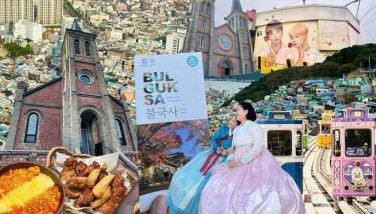I am no Angelina Jolie
Much has been said on television and written in print and in the social media these past few days about Angelina Jolie’s decision to have a double mastectomy after finding out that she carried a mutation of the BRCA1 gene which puts her at high risk of developing breast and ovarian cancers; she placed her own risk of developing breast cancer at 87 percent. She has been called brave, an empowered patient, an inspiration among other positive things for taking a decision that is both proactive and very radical, but as a breast cancer survivor, I would like to put things into perspective and break down some of the realities of breast cancer.
While I admire Jolie’s decisive stance to take the breast cancer bull by its horns, so to speak, and exercise total control of her body, her choice is not the standard medical protocol for such a condition. And while she has expressed over and over again in interviews that coming to the decision was not easy, it is in fact easier for Ms. Jolie because of her vast financial resources and her access to relevant information and the latest breakthroughs in reconstructive surgery; a majority of women, whether with the gene or not, whether diagnosed at an early or later stage, are not as fortunate as she is. Sadly, as is the case in our country, women die because they either do not have the information or the money, including a comprehensive medical insurance to pay for even a simple diagnostic test, or both; if Jolie did not have one or the other, and if she was not a celebrity, it may very well have been a different story.
Breast cancer treatment in itself is very expensive and if you are diagnosed with an aggressive form, it becomes prohibitively expensive; the same can be said of preventive measures such as the BRCA1 test that Jolie took. In the Philippines, BRCA1 testing is unavailable but may be outsourced to an Indian medical laboratory for about P100,000. Now, add that to the cost of a double mastectomy, the doctors’ fees, the hospital stay, the medication and the reconstructive surgery; in my estimate, the total cost could likely reach the equivalent of P1 million or more. How many women around the world could easily cough up that amount under similar circumstances?
As an actress, would Angelina Jolie have gone ahead with the double mastectomy if reconstructive surgery was unavailable or out of the question? That, perhaps, is the more difficult decision to make.
 Cover girl: Angelina Jolie’s story took center stage when she announced her recent double mastectomy after testing positive for the BRCA1 cancer gene. www.eonline.com
Cover girl: Angelina Jolie’s story took center stage when she announced her recent double mastectomy after testing positive for the BRCA1 cancer gene. www.eonline.com “I would like to encourage every woman, especially if you have a family history of breast or ovarian cancer, to seek out the information and medical experts who can help you through this aspect of your life and to make your own informed choices,†the actress said in a CNN interview. “I can tell my kids that they don’t need to fear they will lose me to breast cancer,†she added.
As a mother myself, I find her motivations selfless and her determination to avoid the fate of her mother who passed away at the age of 56 to ovarian cancer highly commendable; but her story is relevant only to a very small percentage of women according to H. Gilbert Welch, a professor of medicine at the Dartmouth Institute for Health Policy and Clinical Practice and the co-author of Overdiagnosed: Making People Sick in the Pursuit of Health. He wrote an exclusive CNN article to weigh in on the whole “Angelina Effect,†as Time magazine dubbed her decision to go public with her condition (or lack thereof). Welch said that 99 percent of American women do not have the BRCA1 or BRCA2 gene; he added that 90 percent of deaths from breast cancer worldwide have nothing to do with the BRCA1 gene since most women do not carry it and because breast cancer is sporadic. Should the small percentage of women with the BRCA1 gene go the way of Angelina Jolie? That is now a hot topic of debate that may never yield one standard answer. Welch suggests that women carefully look at their family history first before getting tested for BRCA1 since this gene is hereditary.
After testing positive for the BRCA1 gene, Jolie’s medical saga (that is what it has become, at least in my opinion) began with a three-step process that started in February with a procedure to increase the chances of saving her nipples. After two weeks, she had her breast tissues removed and temporary fillers put in place to make space for implants; nine weeks later, she had breast reconstruction. “There have been many advances in this procedure in the last few years and the results can be beautiful,†stated Ms. Jolie in the same CNN interview, sounding very pleased with the results. Her risk of developing breast cancer is now down to five percent. In the United States, breast reconstruction has become part of the treatment protocol for women who have had mastectomies and the procedure is covered by insurance. I have two friends, both breast cancer survivors, who underwent breast reconstruction in California — one had implants while the other opted to use her fat and skin to create a new breast complete with a nipple. Breast reconstruction including the kind that involves using a patients own fat and skin are available at very select medical facilities in the Philippines but they are not covered by insurance.
“Having a double mastectomy is not a 100-percent guarantee that you will not develop breast cancer in the future as breast tissue cannot be totally removed with the surgery,†offered my oncologist, Dr. Francis Lopez, when I asked for his reaction to Jolie’s decision. “Women who test positive for the BRCA1 gene should be more vigilant in detecting breast cancer; one way of doing this is by undergoing breast MRI. Prophylactic double mastectomy is a personal choice,†added Dr. Lopez.
I was fortunate that, while my breast cancer was advanced and aggressive, I was not faced with the decision to have my breast removed; my breast surgeon was adamant about saving my right breast, telling me that a mastectomy was not a necessary part of my treatment protocol. To be very honest, I do not know if I would have been as positive after my diagnosis if I was told I had to lose my breast. Aesthetics aside, I believe that breasts are a vital part of a woman’s body; it is what makes us mothers, nurturers. It is part of our feminine identity. I probably would have struggled and dreaded the physical, psychological and emotional loss. I salute women who have had to make the painful and difficult decision of having mastectomies when breast reconstruction did not exist and yet live their lives fully; like Jolie, I’m sure they did it primarily for their families.
Jolie also recently announced she may undergo surgery to remove her ovaries as a preventive measure to developing ovarian cancer; she has a 50 percent chance of getting it. While she has not made public when she will have the procedure, this decision will most likely lead to further debate on what the appropriate response is to certain medical conditions, particularly cancer. I myself had a radical hysterectomy last year to avoid the risk of developing other forms of cancer involving the reproductive system. While this is not part of the standard treatment protocol for breast cancer, I did not want to take the relatively small risk that my five-year medication carried. That, if I may say, was my “Angelina Jolie Moment.â€
I had my annual medical checkup about two weeks ago and I am happy to share that I am now officially two years cancer-free and I am as productive and active as ever. While standard medical protocol only requires me to have a mammogram annually, I go the extra mile (a very expensive extra mile, if I may add) and undergo a PET CT scan, a breast MRI, an ultrasound and a complete blood chemistry as well to cover all grounds. Since my cancer metastasized, my husband and I took the informed decision to take these tests for peace of mind. Thank goodness, Giorgio’s insurance in Japan pays for a large portion of all my medical bills. I have yet to take the BRCA1 test but that is on the horizon; it will be good to know if I have the gene and if I can pass it on to my children.
I do not begrudge Ms. Jolie her wealth or the opportunities available to her and I most certainly do not trivialize her decision; volunteering to have major surgery requires enormous courage and to put her life in the hands of others requires great faith. But her response to her condition is an unusually aggressive and very personal one so rather than focusing on the procedures she had done, let us focus on what still needs to be accomplished and that is to improve breast cancer awareness and early screening and to develop more affordable breast cancer tests and treatments so we can save more lives; after all, breast cancer has become highly curable today.




















